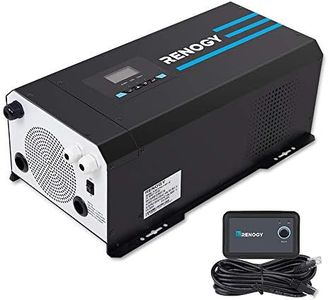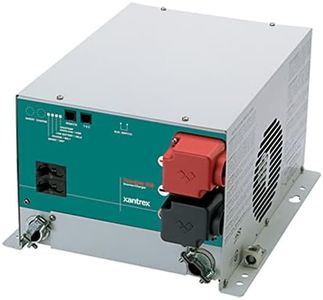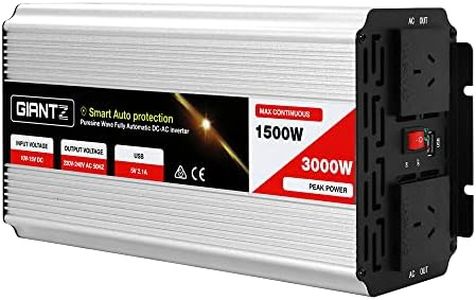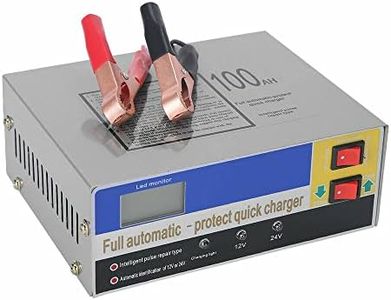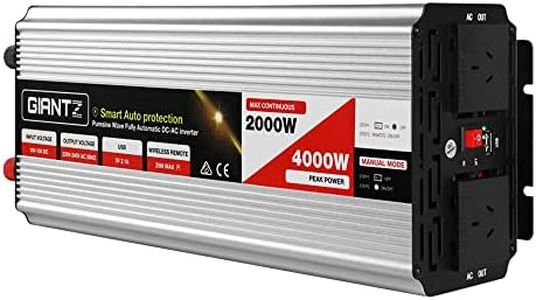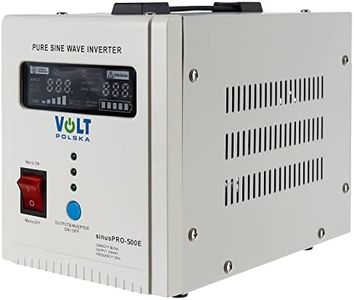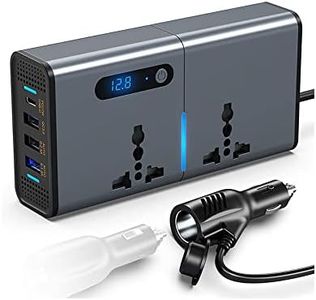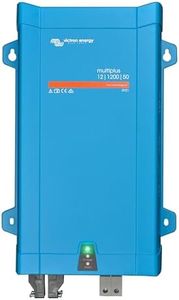We Use CookiesWe use cookies to enhance the security, performance,
functionality and for analytical and promotional activities. By continuing to browse this site you
are agreeing to our privacy policy
10 Best Inverter With Chargers
From leading brands and best sellers available on the web.Buying Guide for the Best Inverter With Chargers
Choosing an inverter with charger is an important decision, especially if you rely on backup power for your home, office, or off-grid locations. An inverter with charger not only converts DC battery power into AC electricity to run your appliances during outages, but also recharges the battery from the grid or generator when power is available. To make the right choice, you'll need to understand your electricity needs, including the types of devices you want to power, their total wattage, and how long you’ll need backup. Evaluating a few key specifications will help you ensure reliable and safe performance.Power Output (Wattage)Power output refers to the maximum load the inverter can support at a given moment. It's important because it determines how many and what kind of appliances you can use simultaneously. Inverters come in low (under 1000W), medium (1000W-3000W), and high (above 3000W) wattage ranges. If you plan to run only small devices like lights and fans, a lower wattage unit may suffice. For refrigerators, pumps, or multiple devices, a medium or high wattage inverter is needed. Match this spec to your total calculated appliance load, ensuring you plan for a bit of extra capacity for future needs or power surges.
Battery Charger Capacity (Amperes or Charging Current)This spec tells you how quickly the inverter can recharge the connected batteries once grid power returns. It's crucial for places with frequent outages, as faster charging means batteries are ready sooner. Charger capacities are generally described as low (10-20A), medium (20-40A), or high (over 40A). For occasional backup, a lower value may be acceptable, but for areas with long or regular outages, a higher charger current is preferable to keep batteries ready efficiently.
Supported Battery Type and VoltageNot all inverters are compatible with all batteries. Common battery types include lead-acid (flooded or sealed) and lithium-ion. The importance lies in safety, performance, and longevity. Also, check the voltage supported—12V, 24V, or 48V systems. Lower voltages (12V) suit small backups, while higher voltages are more efficient and better for larger setups. Choose an inverter that matches your battery type and total battery bank voltage, and consider your preference for maintenance and installation complexity.
Waveform TypeThe inverter’s output can be either pure sine wave or modified sine wave. Pure sine wave models produce power very similar to the main grid and are needed for sensitive electronics, medical devices, or appliances with digital controls. Modified sine wave inverters are less expensive and sufficient for basic loads like lights and fans, but they may cause buzzing or overheating in sensitive gear. If you need to use sophisticated electronics, opt for pure sine wave; for simple backup, modified can suffice.
Input and Output Voltage CompatibilityThis spec refers to the voltage the inverter can accept from the grid or generator (input) and the voltage it outputs to connected devices (output). Matching these to your local standards is crucial for safety and smooth operation. In most regions, residential voltage will be either 120V or 230V; ensure your inverter matches what’s commonly available and needed in your appliances.
Automatic Changeover FeatureAn inverter with automatic changeover will quickly and seamlessly switch from main power to battery power when an outage occurs, and vice versa when power returns. This is important for convenience and preventing data loss or equipment resets. If uninterrupted power is important (like for computers or essential equipment), prioritize an inverter with fast automatic changeover.
Protection FeaturesGood inverters include built-in safety features such as overload protection, short-circuit protection, battery overcharge protection, and thermal shutdown. These features are important to protect both your inverter and your connected devices from damage. When shopping, look for models that list multiple protection mechanisms, especially if you expect variable loads or want a worry-free experience.
